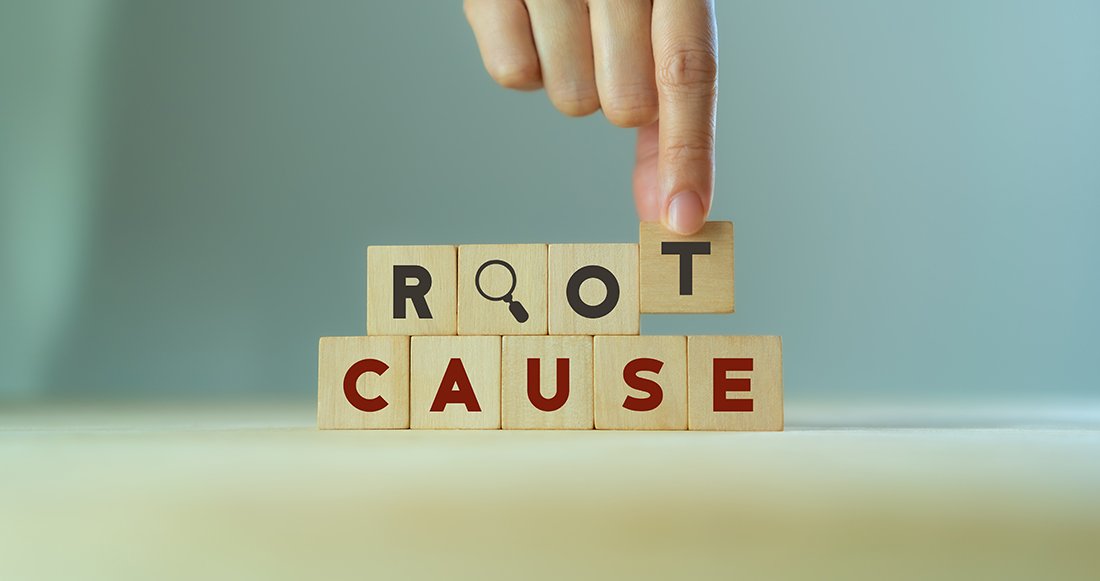Triggers – Identifying and preventing them is the third installment of the series Power of Patience. In our earlier posts, we describe patience as the ability to stay calm and in control despite adversity, frustration, or delay. It’s also the ability to stay composed, and not giving in to impulsiveness or frustration. Patience has become more critical than ever. Not only does it lead to better mental and emotional well-being, it also enhances our relationships and decision-making skills.
To emphasize, patience is not a passive state of inaction (as most people consider it to be) However, it is an active choice to respond with poise and understanding. Patience is empowerment, because it empowers individuals to navigate challenges and adversities with grace and resilience. The power of patience lies in its ability to prevent impulsive reactions, which often leads to regrettable decisions and strained relationships. By embracing patience, we can gain a deeper understanding of ourselves and others, fostering empathy and compassion in our interactions.
However, to harness the true power of patience, one must first identify the cause that test it. These events can be internal or external factors that cause frustration, anger, or impatience. Once identified, understanding and managing them can help prevent hijacking of emotions and actions. This post will explore the importance of identifying triggers and strategies to avoid them.
Identifying Triggers
The journey to harnessing patience begins with recognizing the cause and challenging it. Triggers can vary widely from person to person and emerge from external and internal sources. Externally, it could be issues such as a traffic jam, long lines in a store, or dealing with tough individuals. In retrospect, we associate internal triggers to emotions, thoughts, or past-experiences. These could involve feelings of inadequacy, fear of failure, or unresolved trauma.
Identifying why requires self-awareness and introspection. It also involves engaging in mindfulness practices, which can be helpful in recognizing the thoughts and emotions that arise in response to different situations. Keeping a journal or seeking professional guidance, such as therapy or coaching, can also aid in uncovering underlying reasons deep in our psyche.
Now let’s explore identifying impatience triggers and effective methods to prevent them.
Step 1: Self-Reflection and Awareness
Self-awareness is the foundation of personal growth and emotional intelligence. To elaborate further, when we are self-aware, we can accurately perceive our emotions and understand how they influence our thoughts and actions. It allows us to recognize our strengths and weaknesses, build on them and work on areas that require improvement. Self-aware individuals are more empathetic and better equipped to navigate interpersonal relationships with sensitivity.
Our ability to be mindful helps us align our actions with our values and aspirations. Also, by knowing ourselves deeply, we can make intentional choices. When our decisions are purposeful, they resonate with our authentic selves. This alignment leads to a greater sense of purpose and fulfillment in life.
Strategies to Cultivate Self-Awareness
1. Mindfulness Practice
When we engage in mindfulness exercises, such as meditation, we become more present and attentive. Also, we focus more on our thoughts and emotions. Consider that mindfulness allows us to observe our inner experiences without judgment. This promotes a deeper understanding of ourselves.
2. Keep a Journal
By maintaining a journal to record your thoughts, feelings, and experiences, we connect more with our conscious self. Regularly writing about your day-to-day experiences can unveil patterns in our behavior and emotions. This technique also provides insights into areas we often need to focus on.
3. Seek Feedback
In fact, a chance to get an opinion base on observation, encourages open and honest interactions. For example, feedback with genuine intent can come from friends, family, or colleagues. By actively choosing to listen to other people’s perspective, we get the chance to reflect on how our actions impact others. It also offers a window into ourselves from an outside perspective, which is valuable insight for growth.
4. Take Personality Assessments
Without a doubt, using personality assessments such as the Myers-Briggs Type Indicator (MBTI) or Big Five Personality Traits helps with understanding ourselves. When we can understand our personality traits and preferences, it contributes to our well-being. Also, these assessments sheds light on communication style, decision-making skills, and how we interact with others.
Related: The 5 Most Popular Personality Tests
5. Practice Self-Compassion
We can choose to treat ourselves with kindness and compassion. Specifically, this choice allows us to acknowledge our imperfections without self-criticism. This is especially useful when facing challenges or setbacks. Always remember self-compassion promotes a healthy sense of self-awareness.
Strategies For Practicing Self-Reflection
Self-reflection is the active process of analyzing and evaluating one’s experiences, actions, and decisions. Further, it involves asking probing questions to gain deeper insights into our thoughts and behaviors. Consider that regular self-reflection allows individuals to identify behavior patterns and understand their triggers. It also improves moving towards deliberate change. Here are steps for exercising self-reflection:
1. Set Aside Dedicated Time
Consider scheduling regular time for self-reflection. It’s all about your preference and availability. Whether it’s daily, weekly, or monthly.
2. Create a Safe Space
It’s important to find a quiet, comfortable space to reflect without distractions. Also, this safe environment will encourage open and honest introspection.
3. Ask Guiding Questions
Another technique to consider is using probing questions to delve deeper into our thoughts, emotions, and behaviors. Questions such as: Why did I react that way? or what could I have done differently? These types of questions can offer valuable insight about who we are.
4. Write Reflective Essays
You don’t have to be a writer to use this technique. Giving yourself the freedom to be unbridled will work best with this step. Also, like keeping a journal, writing reflective essays helps to organize thoughts and record journeys of self-discovery.
Step 2: Recognize Internal and External Triggers
Triggers are stimuli or events that cause an emotional response or reaction. These responses or reactions can vary from person-to-person. Further, it’s classified into two major categories: internal and external causes.
Internal Triggers
1. Emotions or internal reasons often arise from emotions. Feelings such as anger, fear, anxiety, or sadness can imbue certain behaviors or reactions.
2. Our deeply ingrained beliefs and thought patterns can trigger specific emotional responses. For example, self-doubt or negative self-talk can lead to feelings of inadequacy or frustration.
3. Past traumas or unresolved past issues can serve as internal factors. They also resurface in various situations, causing emotional distress.
4. Having unrealistic expectations of ourselves or others can lead to disappointment, impatience, or frustration.
5. Internal conflicts such as opposing values or desires, can create a sense of discomfort or unease.
External Triggers
1. External factors relates to the environment, such as noise, clutter, or crowded spaces. These types can impact our mood and emotions.
2. Time Constraints such as pressure to meet deadlines, can induce stress and impatience.
3. Other People’s behaviors such as their actions and words can act as an external factor. These often affect our emotions and responses.
4. Criticism or rejection from others can be emotionally triggering. It also affects our self-esteem and confidence.
5. Unforeseen events, such as a accident or sudden plan change, can cause emotional reactions.
When self-reflecting, it’s important to distinguish the internal from the external. Remember, external triggers relate to circumstances or events outside of your control. Further, internal triggers arise from thoughts, beliefs, and emotions. These could include feelings of inadequacy, fear of failure, or the need for instant gratification.
By identifying both the internal and external, you gain a comprehensive understanding of what induces impatience. This awareness sets the stage for implementing preventive measures.
Step 3: Analyze Patterns and Root Causes
After recognizing triggers, look for patterns that emerge across different situations. Next, analyze whether specific environments, such as people, or tasks, can cause impatience. Understanding these patterns helps to reveal deeper rooted causes that contribute to impatience.
Here is an example: consistently feeling impatient when facing challenging tasks. Also, fear of failure or the desire to avoid discomfort. By addressing these root causes, you can build a foundation for managing impatience effectively.
Preventing Triggers
How do we prevent them from overwhelming us? With gradual and ongoing processes. These would require dedication and self-discipline. Here are some effective strategies to help avoid triggers and cultivate patience:
1. Practice Mindfulness
Being Mindful and fully present is a good first step. Start by observing thoughts and emotions without judgment. With mindfulness, we can recognize the patterns and respond thoughtfully, rather than impulsively.
Related: Mindfulness, How To Embrace It
2. Develop Empathy
When we are empathetic, we allow ourselves to see situations from a different perspective. Further, we are more connected to our emotions. When we empathize with others, we are less likely to take their actions personally or react defensively.
3. Set Realistic Expectations
Often, impatience arises when our expectations do not align with reality. Setting realistic expectations helps us accept delays and setbacks with equanimity, reducing frustration.
4. Cultivate Gratitude
Practicing gratitude shifts our focus from what we lack, to what we have. By fostering contentment and patience, we learn to be grateful. It also reminds us of the blessings in our lives. This also helps us navigate difficulties with a positive mindset.
5. Use Breathing Techniques
Deep breathing exercises are a powerful tool to calm the mind and regain composure. During challenging situations, it’s an excellent tool for instilling focus and steadfastedness. It also provides moments to pause and respond thoughtfully, rather than react impulsively.
6. Learn from Mistakes
Whether we dwell on past failures or mistakes, it’s important to view them as opportunities for growth. When we accept our imperfections, this allows us to build patience as we strive to improve.
7. Seek support
By surrounding yourself with a supportive network of people. Others, such as friends, family, or mentors who can provide guidance and encouragement. Having someone to talk to can offer new perspectives and insights.
A Paraphrase From Parami, Ways To Cross The Woods by Ajahn Sucitto, on Patience
Patience is not a numbing resignation to the difficulties of life; it doesn’t mean that suffering is all right. It doesn’t mean shrugging things off and not looking to improve our behaviour. Nor does it mean putting up with something until it goes away… In its perfection, patience means giving up any kind of deadline, so the mind is serene and equanimous. But if the patience isn’t pure yet (and it takes time to develop patience!), the mind still feels pushy or defensive. Impure patience is the attitude: ‘Just hold on and eventually things will get better; I’ll get my way in the end if I’m patient enough.’ This approach can temporarily block or blunt the edge of suffering, but it doesn’t deal with the resistance or the desire that is suffering’s root.
Pure patience is the acceptance that acknowledges something, adding nothing to it or covering it up. Supported by the insight that when one’s mind stops fidgeting, whining, and blaming, then we understand suffering… It is this suffering that stirs up hatred and greed and despair… and it is through practicing patience that the current can stop. Reactivity isn’t the truth of the mind; it’s a conditioned reflex, and it’s not self. Because of that, suffering is fleeting, and when it is, the mind is free.
Read the full post here
Summary
The power of patience is a transformative force that can elevate our lives and interactions to new heights. We can embrace a more patient and compassionate way of living by identifying triggers that test our patience and employing proactive strategies to prevent them. Patience enhances our mental and emotional well-being and strengthens our relationships, personal growth, and ability to navigate life’s challenges gracefully. As we cultivate patience within ourselves, we inspire others to do the same, creating a ripple effect of calmness and understanding in our communities and beyond.
















